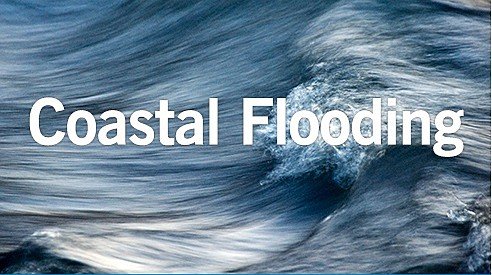
Urgent: Coastal Flood Advisory Issued Until 10 a.m.
Only sporadic road closures are anticipated due to flooding of parks, highways, and lots, the notification warns. dangerous conditions for swimming and surfing, in addition to isolated beach erosion. Rip currents can carry even the best swimmers into deeper water. Give yourself extra time if you have to travel because some roads may be closed. Steer clear of objects and water that is unknown in depth. Take the required precautions to safeguard properties that are susceptible to floods. It is depressing to get into the waves. If you are in a rip current, you can just calm down and stay afloat. Do not swim against the current. If at all feasible, swim along the beach. If you are unable to coast Leave, look toward the shore, and give a wave.
Comprehending Weather Alerts
To warn the public about possible hazards, the NWS provides a variety of flood alerts. This is a summary:
Flash Flood Alert: Act Now When there is a flash flood warning, it means that a flash flood is happening or will happen soon. Even in places where there isn’t any rainfall right now, this kind of flooding can occur quickly and violently from minutes to hours. It is essential to take immediate action, Coastal such as relocating to higher land.
Flood Warning: Act Now When flooding is either impending or already occurring, a flood warning is issued. To guarantee their safety, residents in impacted areas should take preventative measures.
Flood Warning: Exercise Caution Although a flood advisory is not as serious as a warning, it nevertheless of Coastal
Flood Warning: Be Ready When circumstances are suitable for flooding, a flood watch is issued. While it encourages readiness, it does not certain that floods will happen.
Professional Safety Advice from the NWS
Particularly in areas that are prone to flooding, floods can provide serious concerns. To keep yourself and your stuff safe, abide by these rules:
Move to Higher Ground: As a precaution, move to higher ground if you live in a flood-prone location or are camping in a low-lying area.
Observe Evacuation Orders: As soon as local authorities issue evacuation orders, heed them. Make sure your house is locked and secure before you leave.
Disconnect Appliances and services: To reduce electrical risks during floods, disconnect appliances and services as soon as possible.
Avoid Submerged Areas and Basements: Steer clear of rooms with submerged electrical systems or basements outlets or cords to prevent accidents on Coastal .
Leave Right Away if Necessary: Leave right away if you hear popping, crackling, buzzing, or sparking sounds. Steer clear of potentially electrically charged water.
Avoid Floodwaters: Never try to cross floodwaters on foot. You can be knocked off your feet by just 6 inches of quickly flowing water.
Seek Higher Ground When Trapped: Locate the highest location you can and dial 911 for emergency help if you are trapped by moving water.
A Crucial Note: Do Not Drive Through Floodwaters
Flooding is more likely to occur after heavy rain, particularly in low-lying locations. No matter how deep the water is, you should never try to drive through it Coastal . Most automobiles can be washed away by 12 inches of surging water, the NWS cautions. By following official warnings and keeping an eye on weather updates, you can stay informed and put your safety first.
Danger Ahead: Why You Should Never Drive Through Floodwaters
Heavy rain increases the risk of flooding, especially in low-lying areas. Never attempt to drive through water on the road, regardless of depth. The NWS warns that as little as 12 inches of rushing water can sweep away most vehicles. Stay informed and prioritize your safety by monitoring weather updates and heeding official warnings.